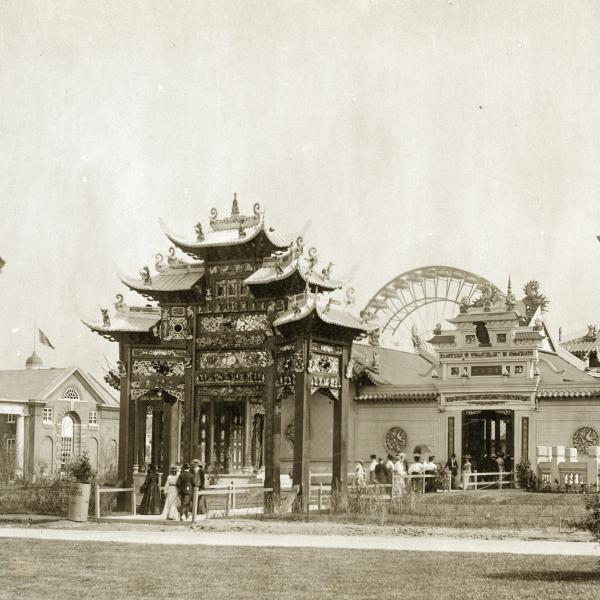Ki Cora Chow is a PhD candidate in the Department of East Asian Languages and Cultures, focusing on the technological experiences of factory workers in her dissertation.
Will machines ever replace humans? This question is as relevant today as it was 70 years ago, when factory workers in Hong Kong first stepped into mechanized workshops. After World War II, when the city’s industrial boom was in full swing, manufacturers began “automating” processes. But back then, just like today, machines didn’t operate on their own — they relied heavily on the attention and care of workers, many of them low-paid women and children.
One of those machine minders was Auntie Yee. Starting in the late 1960s, she spent over 30 years working in a Hong Kong textile factory. Her main responsibility was “drawing,” a process that turned fibers into yarns by feeding them through a series of rollers. Because the fibers were so fragile, they often broke, and it was up to Auntie Yee to reconnect them. This task, far from being simple, required not just quick hands and sharp eyes but serious technical skill. She had to adjust her moves to match the machine’s pace, the strength of the fibers and even the room’s temperature — and she had only a heartbeat’s time to get it right.

Auntie Yee’s role extended far beyond fixing fibers; she often had to step in as an on-the-spot engineer. Fibers would frequently get stuck in the machines, and fixing them could be dangerous. With no specialized tools provided by the factory, Auntie Yee took matters into her own hands by crafting a hook knife. Here’s how she did it: She sharpened a blade with a factory drill, fashioned a sturdy handle from discarded plastic and sewed a sleek leather case using a factory sewing machine. To give it a personal touch, she attached a cute photo of herself and her daughter to the case. By repurposing what was available, she not only made her work easier but also helped reduce waste for the company.

And Auntie Yee wasn’t alone. Interviews conducted by the Centre for Heritage, Arts and Textile, a factory-turned-museum in Hong Kong, demonstrated that many workers found creative ways to solve problems on the job. Ho Chi Fong, part of the packaging team, sharpened a needle to easily puncture nylon bags and tie them up with threads. Master Yuen casted a new set of knitting needles for foreign-made machines every six months, back when there was no maintenance service. Granted, these were not high-tech solutions, but they show just how much human effort went into running these supposedly “unmanned” factories.
When we talk about factory workers, we often applaud their physical labor but overlook the fact that they were also the technological pioneers during the nascent stage of automation, shaping its trajectory as it grew. In many ways, they’re like the workers behind today’s AI: the Google book scanners, part-time data labelers and low-paid workers on platforms like Amazon Mechanical Turk. It’s not just their hard work — it’s their quick thinking, situational strategies and ad-hoc tactics that have brought AI to life.
So, will machines ever replace humans? Stories like Auntie Yee’s suggest that we might have been asking the wrong question all along. Just as so-called automatic machines were kept running by the ingenuity of worker-engineers, today’s AI systems are shaped by the hands and minds of frontline workers. Perhaps the real question is not whether machines can replace us, but how much of ourselves are embedded in these machines — and what kind of future we are building together.
Headline image: Automatic robots in the industrial factory for assembly automotive products. Photo by Simon Kadula via Unsplash.



